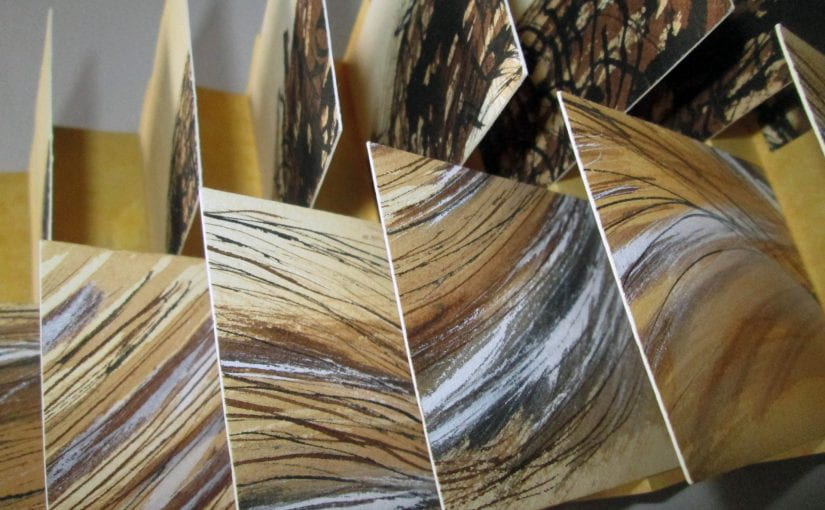Essentially this is just when paper is folded in alternating opposite directions. For bookbinders there are numerous creative, structural applications for the zigzag fold.
(AKA concertina, accordion fold)
Version 1 Fold a long sheet of paper into a series of pages linked by the spine and foredge folds. A narrow “tab” can be used to join more than one piece of paper.

Version 2: Build a zig zag book from 2-page spreads.
This method is good for single-sided printing and books with lots of pages. The structure works best when the grain direction of the paper runs head to tail.

Version 3 – The Elastic Spine
This is a narrow pleated strip of paper that can be used to join single sheets or folded pages together.

Use the elastic spine to make Flag Books
and tunnel books
A cousin of the elastic spine is the Blizzard Fold



